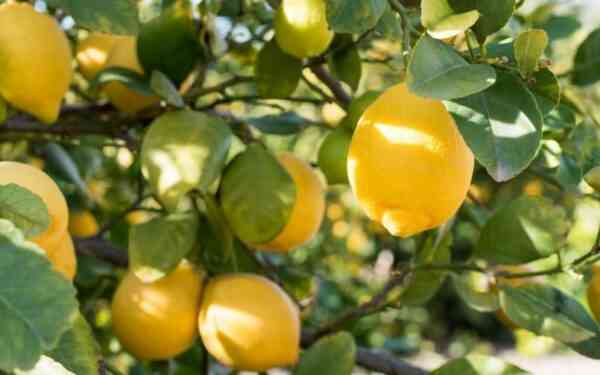The fruits of the lemon tree, in fact, the lemons themselves, are actively used in cooking in most countries. They are used in both cold and hot dishes, not to mention countless drinks and desserts. A bright taste that cannot be confused with anything else is to the taste of many people, and there are a lot of vitamins in lemons. True, you should not lean too much on them either, but eating them regularly is useful, unless, of course, you have allergies or other contraindications.
Interesting facts about lemons
- It is still not known exactly how these fruits appeared, since they are not found in the wild. Scientists believe that lemons once appeared as a hybrid of other citrus fruits.
- The first mention of lemons is found in chronicles dating back to the 12th century.
- China, India and the Pacific Islands are considered the birthplace of lemons (interesting facts about the Pacific Ocean).
- The annual harvest of these fruits in all countries combined is estimated at about 14 million tons.
- In some countries of Southeast Asia, lemons are called limes related to them, those that are round and green.
- On average, 300-350 fruits are harvested from one lemon tree per season, although an impressive record is as much as 2,500 fruits.
- Lemon trees rarely live more than 40 years, and they usually do not exceed 5-7 meters in height.
- The world’s first place in the production of lemons is divided between Mexico and India. Each of these countries grows about 16% of the world harvest (interesting facts about India).
- In a ripe lemon, sugar is up to 3.5% of the total weight of the fruit.
- On average, a lemon crust accounts for about 40% of its mass. The remaining 60% is pulp and pits.
- The so-called lemonade drink was named because it was first made from lemons.
- A hard and unripe lemon bought in a store will become soft and juicy if put in the microwave for 15-20 seconds.
- Lemon juice with salt is a powerful remedy for rust and oxidation of metal surfaces.
- One lemon contains about a day’s worth of vitamin C for an adult.
- In the Middle Ages, it was believed that lemon was an antidote for snake venom and a cure for plague (interesting facts about the Middle Ages).
- Lemons can be stored in the refrigerator for up to one and a half months, but they simply lie in the closet for one and a half to two weeks without any problems.
- The substances contained in lemons help to remove from the body of toxins and get rid of excess weight. An effective remedy is water with lemon juice, acidic, but not excessive, and without added sugar.
- In addition to vitamin C, lemon contains many vitamins A, B and P.
- In ancient times, people used water with lemon juice added to it for disinfection.
- Lemon nail baths (immersed in the pulp of a cut fruit) help to strengthen nails very quickly, in less than a week.
- A special essential oil is made from this fruit. True, it takes about 3 thousand lemons to produce just 1 kilogram.
- The sugar in a lemon is only half as much as in strawberries (interesting facts about strawberries).
- Both in Asia and in Europe, lemon trees were often used as ornamental garden plants.
- The famous navigator James Cook was the first to think of using lemons as a remedy for scurvy, a disease that for a long time was the curse of all sailors.
- In India, pickled lemons are popular.
- And in Spain, lemons are considered a symbol of unrequited, unrequited love.
- Alexander the Great brought these fruits to Europe from his Indian campaign, so at first they were called «Indian apples». For a similar reason, Europeans at first called apricots «Armenian apples» (interesting facts about apricots).
- In high society, blueberries are served only with lemon, because this berry mercilessly stains fingers and mouth, and lemon juice cleans them.
- If you accidentally oversalted the soup, you can squeeze a little lemon juice into it, and the excessive saltiness will no longer be felt.
- Previously, lemon juice was squeezed and evaporated, resulting in a very thick and almost black liquid called “technical lemon juice”. It was used to dye various fabrics.
